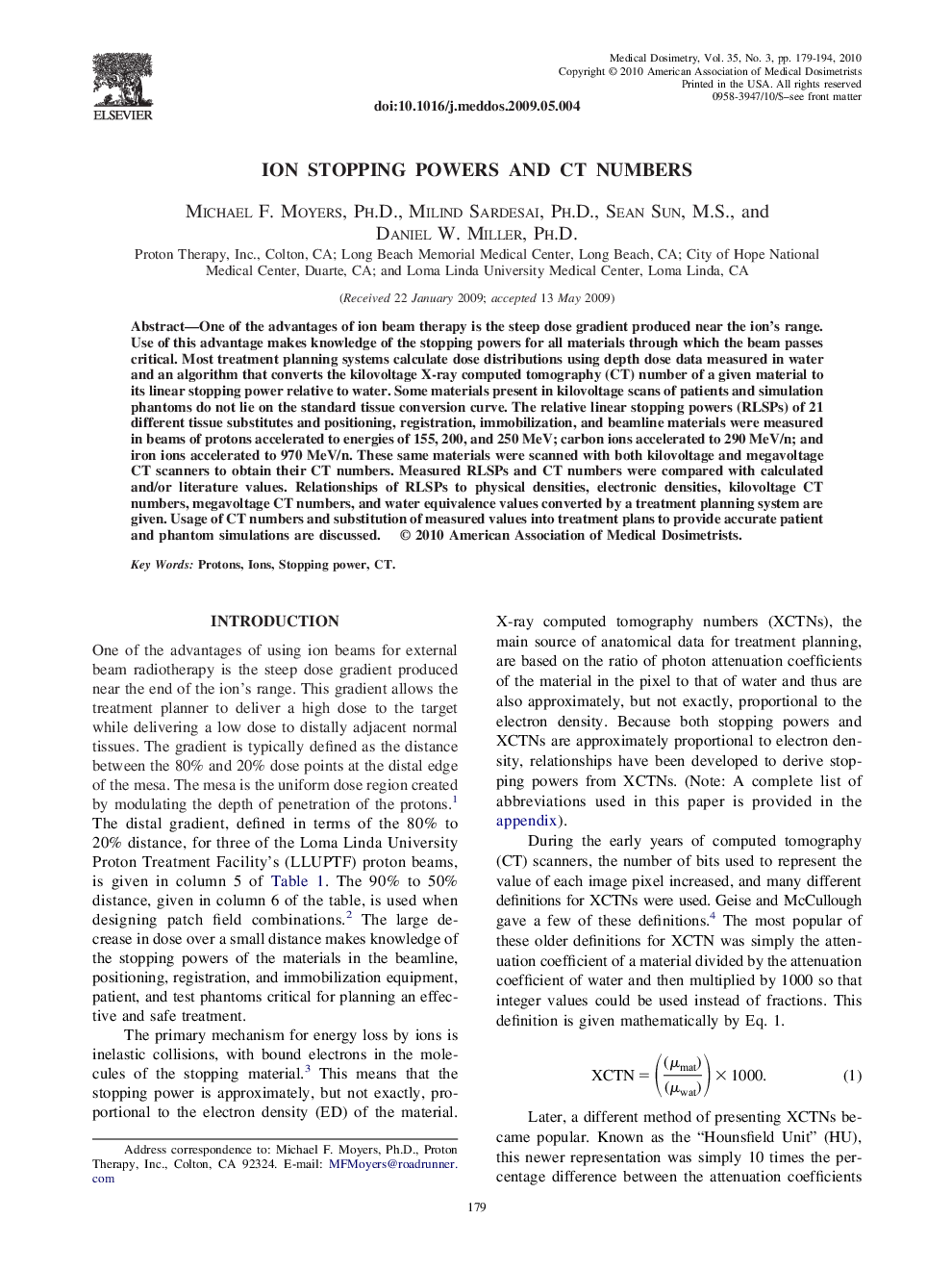| Article ID | Journal | Published Year | Pages | File Type |
|---|---|---|---|---|
| 1885351 | Medical Dosimetry | 2010 | 16 Pages |
Abstract
One of the advantages of ion beam therapy is the steep dose gradient produced near the ion's range. Use of this advantage makes knowledge of the stopping powers for all materials through which the beam passes critical. Most treatment planning systems calculate dose distributions using depth dose data measured in water and an algorithm that converts the kilovoltage X-ray computed tomography (CT) number of a given material to its linear stopping power relative to water. Some materials present in kilovoltage scans of patients and simulation phantoms do not lie on the standard tissue conversion curve. The relative linear stopping powers (RLSPs) of 21 different tissue substitutes and positioning, registration, immobilization, and beamline materials were measured in beams of protons accelerated to energies of 155, 200, and 250 MeV; carbon ions accelerated to 290 MeV/n; and iron ions accelerated to 970 MeV/n. These same materials were scanned with both kilovoltage and megavoltage CT scanners to obtain their CT numbers. Measured RLSPs and CT numbers were compared with calculated and/or literature values. Relationships of RLSPs to physical densities, electronic densities, kilovoltage CT numbers, megavoltage CT numbers, and water equivalence values converted by a treatment planning system are given. Usage of CT numbers and substitution of measured values into treatment plans to provide accurate patient and phantom simulations are discussed.
Keywords
Related Topics
Physical Sciences and Engineering
Physics and Astronomy
Radiation
Authors
Michael F. Ph.D., Milind Ph.D., Sean M.S., Daniel W. Ph.D.,
